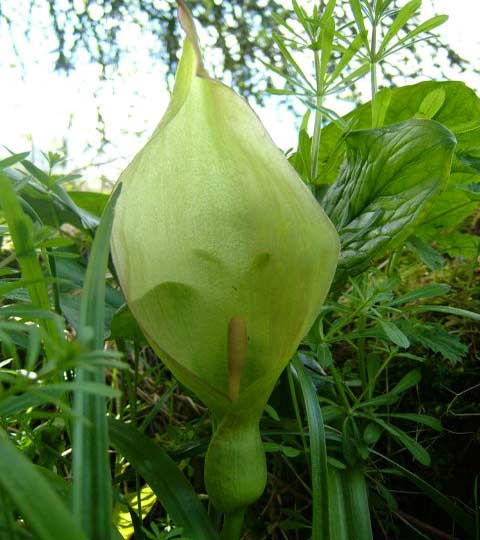In the dense forests of Maine and Florida, there exists a variety of Indian Araceae that remains green throughout the year. Over a span of 15 to 20 years, it continuously changes its sex from male to female and back again.
 |
| Moderately sized Indian Araceae with one leaf, producing male flowers (Photo: ac-lyon) |
Most plants exhibit both male and female flowers on the same individual, possessing both male and female reproductive organs, or having both stamens and pistils in the same flower.
In the 1920s, this phenomenon was discovered in Indian Araceae, but its mystery remained unsolved until recently. Some American botanists noted that the moderately sized Indian Araceae typically has one leaf and produces male flowers. When slightly larger, it has two leaves and produces female flowers. When young and without flowers, it is neutral, but can later transform into either a male or female plant. Further observations revealed that when it grows well, it tends to become female, while weak and slender plants become male. Therefore, biologists suggest this is an energy-saving mechanism, a self-regulation of the plant’s physiology.
Similar to animals, female plants require significant energy to reproduce. The seeds of the Araceae are large, and female plants expend much more energy producing seeds than male plants do. If a plant produces seeds every year, the nutritional resources may become insufficient, leading to a gradual weakening, and potentially death from nutrient deficiency. Thus, it must accumulate nutrients to be healthy enough to transform into a female for reproduction. After producing seeds, the weakened plant becomes male to conserve energy and nutrients. After resting for a year to rejuvenate, it can once again become female to flower and bear fruit.
Notably, the Indian Araceae not only relies on its transformation for reproduction but also adapts to adverse environmental conditions through this process. When the Indian Araceae loses its leaves to herbivores or is overshadowed by larger plants, it can also transform into a male. It will revert to a female only when conditions are favorable for reproduction.

Indian Araceae, when it has sufficient energy and nutrients, transforms back into a female (Photo: aphotoflora)



















































